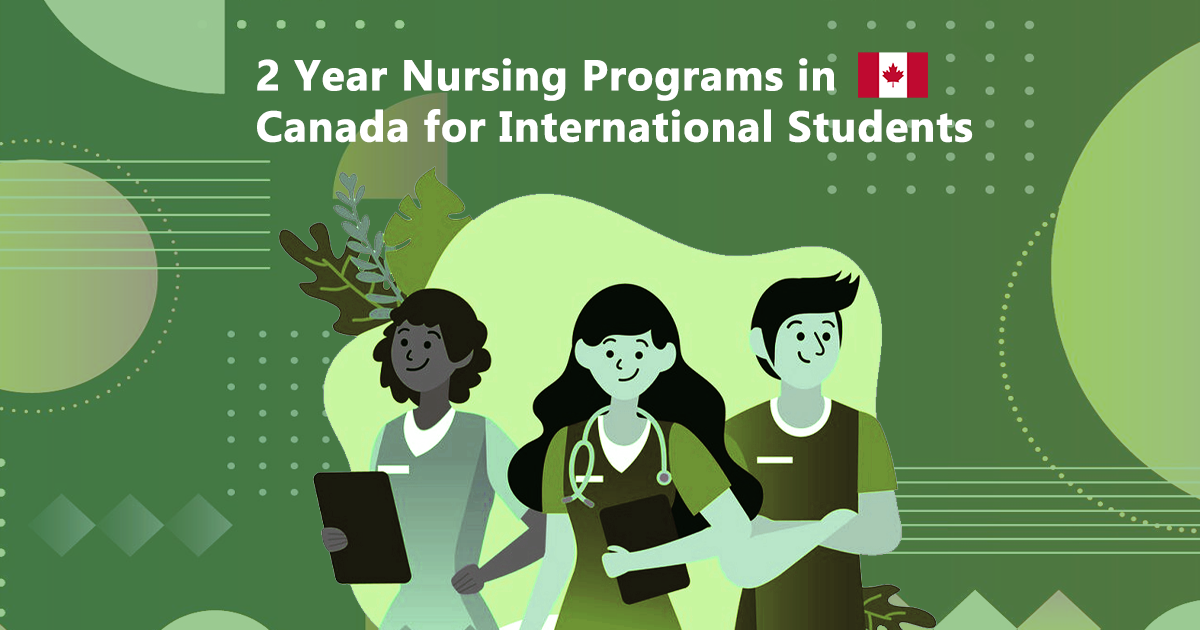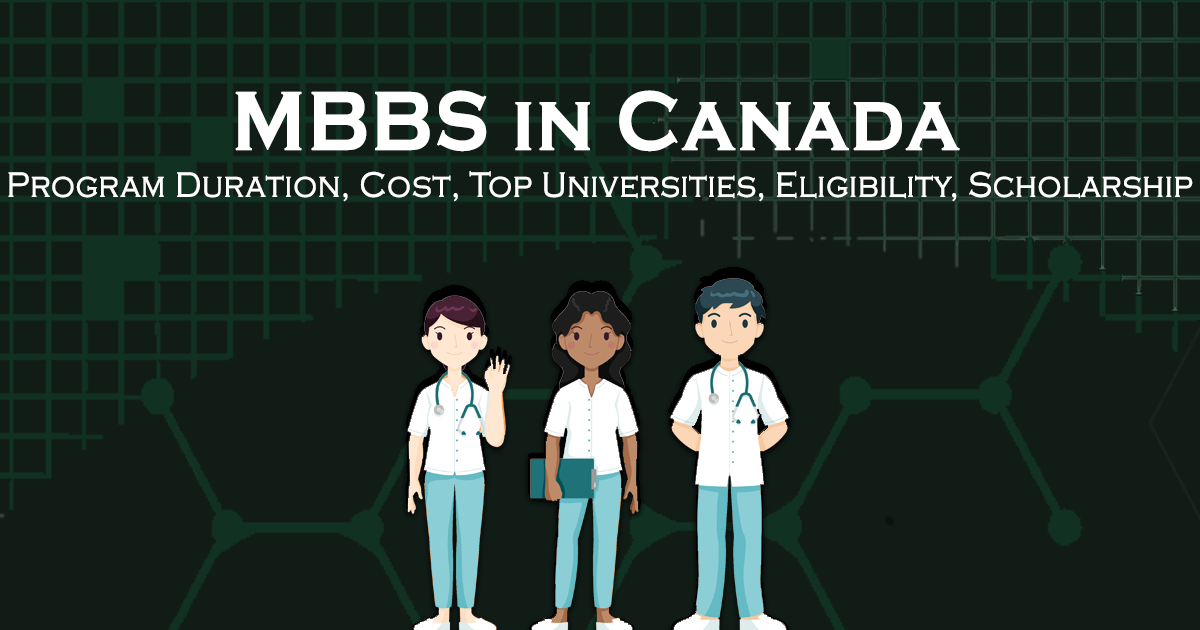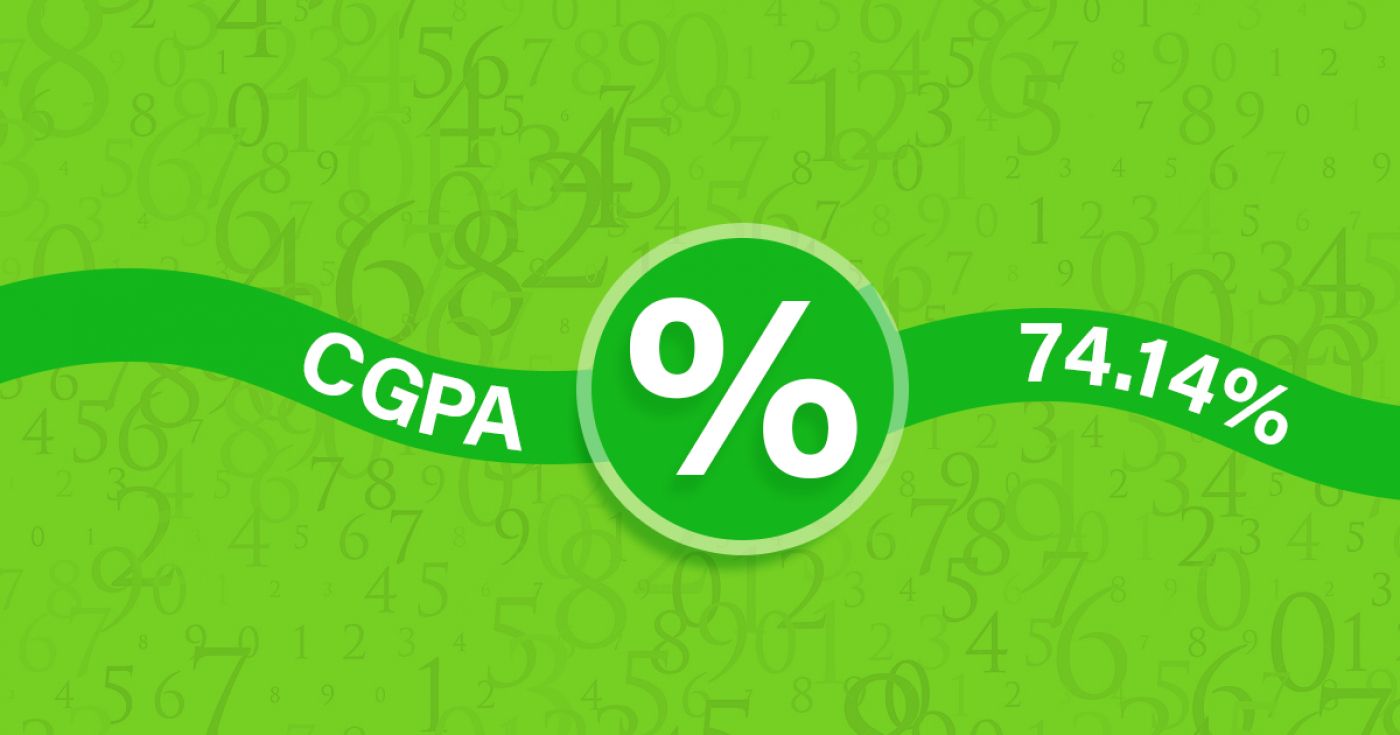Certificate in Design Foundation
at Humber College North Campus Canada
Overview
Humber’s Design Foundation certificate program provides you with the skills to focus your creativity as you begin a career in design. If you have a clear interest in visual art and design, but want to upgrade or build your portfolio of work, or explore various design disciplines while considering your future career, this is the program for you. With a deep scope of experience in a variety of design facets, our faculty provides you with an industry-current perspective of your work while offering you a broad based preparatory design education. You will develop design skills, techniques and processes; and learn about various professional career choices while developing and refining your comprehensive portfolio. Your training is led by professional designers from a variety of disciplines in a curriculum that features courses in:
- 1, 2 and 3-Point perspective drawing
- 2D and 3D principles
- Colour theory
- Interior design
- Industrial design
- Graphic design
- Design software such as Photoshop, Illustrator and AutoCAD
You will also work in professional-quality labs, developing skills that will give you the hands-on experience employers want.
Designers influence the development of products, the packages they come in and the marketing materials used to promote them. We also rely on designers to plan all types of buildings and to create inviting spaces within them.In Toronto’s vibrant creative sector, the demand for talented and skilled designers is strong. Your generalized training in the many aspects of design may be an effective launching pad to more specialized design study in various fields including industrial design, interior design, interior decorating, graphic design, architecture, civil engineering or building technology.
30
Application Processing Days
Under Graduate
Program Level
Fact & Figures
Full Time On Campus
Study Mode
12
Duration
Humber College North Campus
Location
Certificate in Design Foundation Assistant Fee
$16394
Tuition Fee
$12000
Average Cost of Living
$75
Application Fee
Certificate in Design Foundation Admissions Requirements
- Minimum Level of Education Required: To be accepted into this program, applicants must have Grade 12 / High School Diploma or equivalent including the following required course(s);-
- Grade 12 English (ENG4C or ENG4U or equivalent)
- Three Grade 11 or Grade 12 C, M or U courses in addition to those listed above.

Get superfast admissions at top Certificate in Design Foundation institutes in 2024
Benefits of choosing
➤Admission’s guaranteed at Top institutes across the world.
➤Enjoy exclusive application fee waiver’s with Edmissions.
➤Unlimited FREE Counselling sessions with Edmission’s
Experts
➤Get Tips from industry veterans to crack the IELTS exam in 1
week.
➤Assistance with scholarships, loans, forex, student accommodation and visa guidance.
Work Permit Canada
Students who wish to work in Canada require a work permit to do so. A student in Canada can work part-time during the course of his studies and full-time during holidays and semester breaks and post the completion of their course/program.
Rules for getting a part-time work visa in Canada
You can also work part-time on campus at your university.
Work Permit
Duration
Your part-time work permit will be valid for as long as you have a valid study permit.
Working Hours
20 Hours/Week
As a full-time student, you can work for a maximum of 20 hours a week. However, you can work full- time during holidays and breaks.
Document Required to Work in Canada
List
To apply for a work permit, you will need a study permit that mentions that you are allowed to work part-time on campus.
Social Insurance Number
Study Permit
You will need a Social Insurance Number (SIN) to Service Canada. if you wish to work in Canada during the course of your studies. To apply for the same, you need a valid study permit, and you should be a full- time student at a recognized university.

You can work part-time off-campus if you are studying in the Quebec province.
Duration of Work Permit Canada
Your part-time work permit will be valid for as long as you have a valid study permit.
Work Hours Canada
As a full-time student, you can work for a maximum of 20 hours a week. However, you can work full- time during holidays and breaks.
Document Required to Work in Canada
To apply for a work permit, you will need a study permit that mentions that you are allowed to work part-time on campus.
Social Insurance Number
You will need a Social Insurance Number (SIN) to Service Canada if you wish to work in Canada during the course of your studies. To apply for the same, you need a valid study permit, and you should be a full- time student at a recognized university.
Working after completing your course
In Canada, you will need a work permit to get a full-time job in Canada after finishing your studies. You chose a work permit like the Post-Graduation Work Permit (PGWP) if you wish to stay back in Canada and work full-time.
Visit Government of Canada Website for more detail
Post-Graduation Work Permit (PGWP)
The Post- Graduation Work Permit (PGWP) allows you to work for three years in Canada if you have completed a two years degree or more.
Application
how can i apply
You can either apply online or download the form and mail the application along with the required documents. Pay your fee and then wait for the decision to come.
Application Documents Required
List
To apply for the work visa, you need a degree from a recognized and accredited Canadian University along with an intention to stay and work in Canada only temporarily.
When to Apply?
One can apply for the full-time work permit in the first three months post the completion of their course during which the study permit is still valid.
How long does it take?
90 days
You will have to wait for 90 days for the decision on your work permit.
Duration
3 Years
The work permit is valid for 3 years if you have completed a two years degree program or more.
Fees
CAD 255
The fee for the work permit is CAD 255 plus the holder fee and the work permit processing fee.
Monthly Wages
CAD 1,600
An applicant is guaranteed a minimum salary of CAD 1,600 per month while working in Canada. This amount though varies on the job and the province you are working in.
Work Hours Canada
No Limit
There is no maximum limit, and you can work for as many hours as you want on the full-time work permit.

Required Documents
List
To apply for the work visa, you will need the following documents:
- Forms: IMM 5710, IMM 5476 and IMM 5475;
- Graduation Proof
- Proof of payment of work permit fees
- Copies of your travel and identification documents, passport pages and current immigration document.
Till a decision is made on your work visa, you can continue to work full time. All you need to have is your completed degree, should have applied for the permit before the expiry of your study permit and you should be allowed to work off-campus.
Information
Disclaimer
The information provided about the work permit is true and complete to the best of our knowledge. All recommendations are made without any guarantee on the part of the author or the publisher. The author and the publisher, therefore, disclaim any liability in connection to and with the use of this information.
Detailed Program and Facts
30
Application Processing Days
Full Time On Campus
Program Intensity
Under Graduate
Program Level
12
Duration
Study Visa
Student Visa For Canada
Any student who wishes to study in Canada requires a student visa. Some of the essential information for the application process is given below.
When Should I Apply?
4 to 6 months
Ideally, one should apply for the study permit at least 4 to 6 months before the commencement of your course/program.
Bank Account
No Need!
There is no need for a blocked bank account to apply for a student visa to Canada.
Duration of visa
Course Duration + 3 Months
The student visa is valid for the entire period of your course plus three months.
Time to Wait for Visa
35 Days
It takes time. It might take up to 35 days post your interview for the application process to complete and for you to finally receive your visa.
Appointment
Required
It varies from applicant to applicant, but one may have to take part in one or two visa appointments, namely a medical examination and a visa interview.
How you can apply
Application Process
An applicant can either apply online or offline by visiting a visa application centre and submitting their documents. After the analysis of your application, you might be called for an interview.
Fee
Visa Fee
The visa application fee for Canada is CAD 150.
Minimum Funds
833 CAD, 917 CAD
You require a minimum monthly amount to be deposited into your account to prove that you can sustain yourself while studying in Canada. If you are studying in Quebec, you need to have a monthly minimum of CAD 917, and if you are studying in a province except for Quebec, you need to have a minimum of CAD 833 per month.
Any other expenses
Required
You will have to pay a medical examination fee and a visa application service fee to the tune of CAD 15 if you visit a visa application centre to apply for your visa.

Medical Examination
Required
One has to undergo a series of medical examinations to be deemed fit for a student visa of Canada. The tests mostly include blood and urine tests, chest x-rays and other organ checkups.
Language Skills
Not Required
one doesn’t need to prove their language skills in applying for a Canadian Visa.
Disclaimer: The information provided about the work permit is true and complete to the best of our knowledge. All recommendations are made without any guarantee on the part of the author or the publisher. The author and the publisher, therefore, disclaim any liability in connection to and with the use of this information.
Other Courses by Humber College North Campus,Canada
Engineering & Technology
Graduate Certificate in Wireless Telecommunication
The graduates from the Wireless Telecommunications graduate certificate program are 5G ready. The 5G communications platform will support future innovations in the area of the Internet of Things, augumented reality, industrial automation and automated vehicles including drones. Our graduates build and maintain the infrastructure of communication systems. They learn what it takes to be successful in the communications industry. The wireless program focuses on three main outcomes: RF and Optical test and measurement, IP addressing and networking, and troubleshooting of a number of wireless protocols and systems.
Our graduates understand the engineering tools and equipment for the testing of systems including drive test tools, RF and Optical test equipment, protocol analyzers, and virtualization and virtualized tools. Students will have access to learn on some of the best and latest equipment available. The curriculum is kept current with the collaboration of our industry partners in the wireless field. Students utilize the latest technologies and small classes taught by experienced faculty and industry leaders.
The Canadian wireless industry supports over 280,000 jobs with sector salary above the Canadian average. In addition, the international wireless telecommunications market is growing. There are numerous employment opportunities in the planning, developing, manufacturing, co-ordinating, implementing, maintaining and managing of telecommunications systems for businesses and government. As the rate of technology adoption increases in Canadian industry, the Wireless Telecommunications graduate certificate program is preparing graduates for these new markets. A 2015 - 2019 labour market report by the Information and Communications Technology Council (ICTC) indicates that by 2019, over 182,000 critical ICT positions will be left unfilled.
Graduates of the program work at cell phone service providers, equipment manufacturers, in-house information technology (IT) departments, sales departments, and specialized telecommunication and networking companies.
12 month
Duration
$ 19557
Tuition
Health Sciences, Nursing and Emergency Services
Diploma in Hearing Instrument Specialist
Hearing instrument specialists (HIS) are valued members of a hearing health-care team. They conduct comprehensive diagnostic hearing assessments, develop hearing health-care plans, dispense advanced digital assistive hearing devices and evaluate outcomes using evidence-based verification methods.
In the Hearing Instrument Specialist diploma program, you develop the academic knowledge and hands-on, real-world experience required to become a valued hearing health professional. We combine online and in-person learning models, work-integrated learning, exceptional faculty and state of the art facilities to prepare students to skillfully work within their scope of practice and collaborate effectively as part of an interdisciplinary health-care team. Graduates of our program develop the confidence to adapt to the evolving needs of today’s patient and the emerging technologies for patient care and hearing devices.
This program develops holistic and critical thinkers, confident clinicians and compassionate communicators who will become outstanding professionals, effective practitioners and leading contributors in their field.
Program Highlights
Experience a number of interesting and unique courses within the program such as:
- Fundamental Principles of Hearing Devices
- Learn the history of hearing aids, basic principles of electronics and circuitry, and how this relates to the circuitry of hearing devices and styles of hearing aids. Apply this knowledge to choose the appropriate hearing device for a patient profile, and how to compare the benefits and limitations of each hearing aid style.
- Patient Psychology and Counselling Skills
- Explore the individual, familial, and societal impacts of hearing loss on a psychological, emotional, and social level. Formulate the necessary skills to connect with patients on an empathetic, culturally sensitive, and professional level. Become adept at in-depth case history taking and having goal-oriented discussions to motivate patients in their hearing rehabilitation.
- Disorders
- Identify various pathologies within the peripheral and central auditory system. Collaborate confidently with other medical professionals if referral is warranted. Through this course, you will understand the pathologies behind different types of hearing loss such as hyperacusis, tinnitus, and noise induced hearing loss.
24 month
Duration
$ 16500
Tuition
Journalism & Media
Graduate Certificate in Post-Production
Humber’s Post-Production graduate certificate program will develop the technological skills, creative and critical abilities you will need to thrive in the post-production industry. You will gain a firm grounding in industry-standard, non-linear video editing software. Through lectures and hands-on work, you will learn the fundamentals of the technical and aesthetic creation of digital media content and get the opportunity to specialize and target specific post-production skills to maximize your marketability in a competitive industry.
You will learn how to collaborate with other departments in the production chain, and how to develop efficient broadcast standard workflows. You will be introduced to the theory and practice of picture and sound editing/mixing, VFX and motion graphics creation, and you will learn how to make professional contacts, engage with employers and guilds, and the basic business skills you will need as a freelancer. You will study the fundamentals of branding and graphic design and produce a marketable portfolio website.
With technology as its main focus, your sound, picture, and visual effects compositing skills will enable you to create content to the industry standards required in the competitive media environment.
Learning Outcomes
Upon successful completion of the program, a graduate will:
- Prepare detailed post-production budgets using Movie Magic Budgeting programs.
- Evaluate documentaries, narrative films, TV series and music videos for creative features and technical aspects.
- Prepare and integrate 2-D and 3-D graphic and animation footage using post-production applications.
- Manage the editing process using an Edit Decision List.
- Complete picture editing projects using non-linear editing suites within specified time frames and budgets.
- Complete audio editing projects using non-linear editing suites within specified time frames and budgets.
- Design and build a network system for post-production applications.
- Manage post-production teams.
- Manage post-production projects.
- Distribute interactive content produced through the Web and DVD.
- Compile a portfolio of creative work for presentations to funding agencies and post-production facilities in order to secure employment.
Work Placement
- This program includes a mandatory work placement. We work with you to find a suitable placement in your chosen field of specialization, allowing you to apply the skills you’ve learned in a professional environment. Placements will take place in post-production houses and media companies in Toronto. Work placements are typically unpaid but provide you with the opportunity to further your knowledge in your chosen field and begin to build your resumé and network of professional contacts.
12 month
Duration
$ 29125
Tuition
Creative Arts & Design
Bachelor of Industrial Design (Honours)
Industrial designers design products for consumers. Examples include sports footwear, headphones, wearables and automobiles. Graduates of the program are in high demand for the practical skills gained through the program’s hands-on learning environment. These skills include sketching, digital graphic rendering, model-making and computer-aided design (CAD). The program is project driven, and many of the design projects will involve industry collaboration to ensure real-world relevance.
Students elect a design specialization in Year 3 in one of:
- Automotive design
- Product design or
- Interaction design
Automotive designers design the appearance (styling) of motor vehicles including automobiles, motorcycles and off-road vehicles. Humber is the only industrial design program in Canada that offers an automotive design specialization.
In product design, there is more emphasis on the method of finding a solution to a user’s problem in order to make doing a task easier or make the user experience with the product more satisfying.
Interaction design is a new offering in the program which recognizes that more and more physical products are integrating a digital component, including touch screens or voice activation.
Learning Outcomes
- Upon successful completion of the program, a graduate will:
- Meet the professional criteria as established by the ACIDO Charter (The Association of Chartered Industrial Designers of Ontario), demonstrating core competencies in skills, knowledge and design methodology in industrial design meeting.
- Design, document and communicate high quality interior design propositions of varying size, scope and complexity employing principles of evidence-based design methodology.
- Explain how products work; how products can be made to work better for people; what makes a product useful, usable, and desirable; and how products are manufactured and serviced.
- Select and employ appropriate visual languages to investigate, analyze, interpret, develop and articulate ideas for two and three-dimensional projects.
- Produce sophisticated design proposals emphasizing three-dimensional quality of space achieved through architectural detailing.
- Communicate concepts and requirements to other designers and colleagues who work with them, and to clients and employers. This need to communicate draws upon: verbal and written forms, two-dimensional and three-dimensional media, and levels of detailing ranging from sketching to engineering drawings.
- Employ computer-aided drafting (CAD), computer-aided industrial design (CAID), and appropriate 2D and 3D graphic software to create graphic presentations and marketing materials.
- Integrate sustainable practices in the design process and demonstrate leadership by educating users in these principles.
- Analyze the complexity of forces – economic, political, physiological, sociological and technological – which influence the design of the physical environment.
- Incorporate principles of user-centered design, human factors and ergonomics in design solutions.
- Select appropriate methods and materials to achieve the technical functionality and aesthetically pleasing built environment.
- Select the appropriate process(es) and materials for manufacture for a given production volume.
- Support the marketing function with design strategy supported by graphic/3D materials.
- Demonstrate an understanding of the relationship between human behaviour and the built environment and the implications in preparing design solutions.
- Assess the implications for interior design presented by key developments in current and emerging materials, media and technologies and in interdisciplinary approaches to contemporary design practice.
- Source information on copyright, mechanical patents, and protection of intellectual property, as applied and practiced in the professional field of industrial design.
- Develop a business case for and present design solutions to a variety of stakeholder in keeping with professional standards and practices.
- Employ effective and professional communication skills and techniques to interact, negotiate and undertake collaborative efforts including meaningful discussion of one’s work in an open studio environment, with audiences, clients, markets, end-users and team members.
- Work collaboratively with clients to develop an understanding of the product requirements, leading to a design brief.
- Confidently employ appropriate professional accountability, personal and business ethics demonstrating competency of industry practices.
- Work in a team effectively, utilizing skills of collaboration, negotiation, compromise and conflict resolution.
- Employ appropriate conventions of measurement, scale, site measuring, drafting and volumetric manipulation through a variety of manual and digital modeling techniques.
- Design to exceed the minimum standards of applicable laws, codes, regulations, and practices that protect the health, safety and welfare of the public.
- Speak clearly and persuasively for design concepts and resources.
- Plan and manage projects, demonstrate good time management skills, be a self-starter, and show resourcefulness.
- Employ both convergent and divergent thinking in the process of observation, investigation, speculative enquiry, ideation, rationalization and implementation of design solutions.
- Source, navigate, select, retrieve, evaluate, manipulate and manage information from a variety of sources, both primary and secondary.
- Conduct themselves with honesty and integrity, demonstrating professional accountability.
- Employ a variety of methods of design to develop design solutions.
- Analyze information and experiences in order to articulate an academically structured, sustained and well-supported argument supporting a design issue or creative interior design solution.
- Identify and analyze the customer needs of an identified target market.
- Find relevant information that informs the design process, employing a number of techniques and skills including: observation, expert interviews, market information, and various digital search techniques.
- Employ a variety of ideation techniques, including: sketching, brainstorming, rapid sketching, analogy, metaphors, symbols, and form exploration/sketch modeling
- Develop a design solution which meets users’ needs, derived from concept development, product aesthetics (form, color, texture, haptics) that reflects market trends, human factors (including ergonomics, user interaction, and safety), model making, materials and technology, sustainable design, manufacturing feasibility and design validation, and cost.
- Demonstrate good problem solving abilities.
- Develop creative and innovative solutions.
- Demonstrate a strong aesthetic sensibility and style, resulting in design solutions with visual appeal.
- Articulate a well-supported argument justifying a design concept or creative design solution.
- Articulate the difference and relationship between a product’s form and function and the emotional and experiential needs it fulfills.
- Articulate design strategy in the context of business strategy.
Work Placement
- This program includes a work placement of 420 hours in the summer between Year three and four.
48 month
Duration
$ 20485
Tuition
Skilled Trades
Diploma in Industrial Woodworking Technician
The Industrial Woodworking Technician diploma program (located at the Humber Centre for Trades & Technology) provides you with the knowledge and skills to construct and install basic cabinets, as well as build traditional furniture using recognized trade practices. By completing a series of woodworking projects, students explore various types of joinery and construction techniques using hand tools, portable power tools, stationary machines, as well as computer-based technologies. Time management skills and the ability to work to a deadline are developed and stressed throughout the program. Graduates of the program will be able to produce shop drawings, calculate a list of materials, cut out and assemble basic cabinetry or furniture, and apply a finish. Graduates are able to safely operate most common stationary woodworking machinery, as well as program and run a number of CNC machines.
Employer interest in our graduates has grown steadily during the program’s history. We offer a comprehensive program that provides a solid grounding in woodworking and prepares a student for employment in a wide range of areas including store fixtures, architectural millwork (doors and windows), the kitchen cabinet industry, and furniture construction. Our advisory committee of industry professionals reviews our curriculum and ensure that students are receiving relevant training to prepare them for work in a range of woodworking related fields.
12 month
Duration
$ 26202
Tuition
Computer Science & IT
Diploma in Computer Systems Technician - Information Technology Infrastructure and Services (Co-op Optional)
Computer Systems Technician - Information Technology Infrastructure and Services diploma program prepares you for careers in Information and Communications Technology (ICT). You will build a foundation in electrical and logic circuits, and programming. You will also learn about the main hardware and software components of your computer and different features to improve performance of computer systems. Curriculum in the program prepares you for the role of system administrator whose responsibilities include installation, configuration and managing various operating systems including Microsoft servers, different distributions of Linux supported by virtualization tools and network infrastructure, supporting data and network security. You will also learn about data centre technologies that support small- and medium-sized businesses. You will gain knowledge in supporting public, private, and hybrid cloud environments, and integrating cloud technologies and services.
The program will give you hands-on experience with various hardware platforms, protocols and services with a strong emphasis on network and data systems security. You will have access to state-of-the-art infrastructure to deploy and support Linux and Microsoft operating systems, and administer web servers and applications using different scripting environments.
Our faculty collaborates very closely with industry partners to keep the program and curriculum current and relevant, so that you have the knowledge and skills to work in a cutting-edge high tech sector. You will learn from professors who are experienced industry professionals who have strong connections to companies in the Greater Toronto Area (GTA).
Your group projects help you build essential customer service skills, and develop your interpersonal communications and teamwork skills. This, alongside your new comprehensive technical credentials, will give you a multi-dimensional background that employers want.
Learning Outcomes
Upon successful completion of the program, a graduate will:
- Analyze and resolve information technology problems through the application of systematic approaches and diagnostic tools.
- Support the implementation and administration of computer systems.
- Support the implementation and administration of networking solutions.
- Install, configure, troubleshoot, maintain, and upgrade components of computer systems.
- Install, configure, troubleshoot, maintain and upgrade components of networks.
- Use a variety of scripting tools and languages to automate routine tasks.
- Follow, monitor, and document data storage procedures designed to ensure the integrity of information.
- Apply knowledge of security issues to implementation of information technology solutions.
- Provide efficient and effective technical support to clients in a manner that promotes safe computing practices and reduces the risk of issue recurring.
- Conform to workplace expectations found in Information Technology (IT) environments.
Optional Co-op
- This program offers a co-op option. Co-op work terms enable you to apply your skills and knowledge in a work environment and gain valuable, practical experience related to your program of study. You will learn new skills, learn about the world of work and meet people in your profession.
- For students who are accepted into the program, one co-op work terms will take place between Semesters 3 and 4. There are limited spaces in the co-op option. Therefore, you will apply for the co-op option during Semester 1 and be informed of the process by which to apply. While co-op work opportunities are not guaranteed, as students are in a competitive job placement market, participating students will receive a wide range of services to help them find a co-op opportunity.
- Contribute to the successful completion of the project applying the project management principles in use.
24 month
Duration
$ 17618
Tuition
Engineering & Technology
Advanced Diploma in Civil Engineering Technology
Humber’s Civil Engineering Technology advanced diploma program provides you with the skills needed for a career in the growing field of civil infrastructure. Infrastructure encompasses all of the essential elements necessary for society to operate including buildings, transportation (highways and transit), municipal services (water, wastewater) and green spaces.
The curriculum, designed in collaboration with industry, covers all aspects of infrastructure, from the inception of an idea to the completion of construction, and blends in-class academic learning with hands-on laboratory work. You will learn how to design structural steel, reinforced concrete and timber structures. Municipal services (water, wastewater) and water supply management will be explored. Transportation infrastructure and highway design will be studied using design codes and standards. Additionally, you will learn all the skills necessary to support design and construction including surveying, geomatics, Geographical Information Systems (GIS), drafting (AutoCAD and Building Information Modelling (BIM)), soils and materials testing, project administration and management, and environmental protection and remediation. Our courses are taught by experienced faculty and industry experts many of whom work with Greater Toronto Area construction and engineering firms. Humber’s strong reputation in the civil engineering industry can give graduates an edge in the employment market.
36 month
Duration
$ 16394
Tuition
Computer Science & IT
Advanced Diploma in Game Programming
Humber’s Game Programming advanced diploma program is project-driven and focuses on programming and designing game engines for the purpose of game development, from indie to AAA. You will work on team projects using programming tools to develop, test and maintain game applications through the practice of theories of usability, information architectures, network architecture and industry standards of practice. Topics such as coding, game engine design, game production, artificial intelligence, virtual reality (VR), augmented reality (AR) and platform-specific programming are all covered by a comprehensive set of courses.
Throughout your study, you will have access to peers in related programs such as Visual and Digital Arts and Animation - 3D which will allow you to participate in collaborative work, as well as the opportunity to build high-quality assets for use in the games you are developing as a student programmer.
You will graduate with a significant capstone project to demonstrate your coding talents, and a well-rounded skillset that combines high levels of mathematics, physics and visualization within the field of computer programming. With a high degree of game engine expertise, familiarity with 3D modelling, scripting, and technical direction, you will have the tools you need to compete and succeed in the rapidly expanding field of game development.
36 month
Duration
$ 16414
Tuition
Engineering & Technology
Advanced Diploma in Electrical Engineering Technology Control System (Co-op Optional)
Humber’s Electrical Engineering Technology – Control Systems advanced diploma program blends in-class, academic learning with hands-on laboratory work to prepare you for a career in electrical power and control systems engineering. In the third year of this program, you’ll learn advanced skills for a thorough academic and practical approach to the control of electrical equipment and industrial process instrumentation in automated manufacturing, processing, power systems and utilities industries.
Our curriculum, designed in collaboration with industry, focuses on programming software, feed-back control system and motor control, instrumentation and programmable logic controllers (PLCs), power electronics, power generation, transmission and distribution, power system design, human machine interface (HMI) design, and supervisory control and data acquisition (SCADA). Superior mathematics, physics and critical thinking skills will be es
Humber’s Electrical Engineering Technology – Control Systems advanced diploma program is designed in collaboration with an industry advisory panel ensuring you learn fundamental concepts and experience the latest technologies in this field. The program blends classroom theory with laboratory work on subjects such as electric devices, circuits, digital fundamentals, power generation and distribution, electrical computer-aided design (CAD), electrical codes, programming PLCs and industrial communications.
During the third year of this program, you’ll learn advanced skills to design, operate and maintain electrical equipment and instruments in automated manufacturing, environmental and power systems.
Our curriculum focuses on programming software, feed-back control systems, motor control, instrumentation, programmable logic controllers (PLCs), power electronics, power generation, transmission, distribution, power system design, human machine interface (HMI), and Supervisory Control and Data Acquisition (SCADA).
The program builds upon the solid technical foundation of our diploma program, providing broader career options. The skills learned in this program are enhanced through project-based learning in a hands-on teaching and learning environment.
Optional Co-op
This program offers an optional co-op opportunity. Co-op work terms enable you to apply your skills and knowledge in a work environment and gain valuable and practical experience related to your program of study. You will improve personal and technical skills while expanding your professional network.
For students who are accepted into the program, three co-op work terms will take place. The first four-month work term is between Semesters 2 and 3, and then two consecutive four-month work terms occur between Semesters 4 and 5. While co-op work opportunities are not guaranteed, participating students will receive a wide range of services to help them find a co-op placement.
sential to your success. The program builds upon the solid technical foundation of our technician program, ensuring wider career options. The skills learned in the technical program are enhanced through project-based learning and increased hands-on practice in the labs.
36 month
Duration
$ 17608
Tuition
Engineering & Technology
Diploma in Mechanical Engineering Technician
Humber’s Mechanical Engineering Technician diploma program gives you a thorough knowledge of materials and mechanical solutions for designing and manufacturing mechanical parts and assemblies. You will learn in Humber’s state-of-the-art labs, offering you the practical experience you need to succeed. Courses focus on:
- Engineering drawings/calculations
- Mechanical operations
- Programming of computer numerical control (CNC) machine tools using computer-aided manufacturing (CAM) software – Mastercam
- Applying design principles and practices
- Design and manufacturing process problems
- Learning 2D computer-aided design (CAD) software – AutoCAD, 3D CAD software – SolidWorks
The curriculum includes courses in solids mechanics, mechanical design, hydraulics, pneumatics, programmable logic controllers (PLCs), manufacturing and management. You will be able to develop the manufacturing procedures to produce mechanical components.
Begin a career designing and manufacturing with our Mechanical Engineering Technician diploma. According to the Canadian Government’s Working in Canada website, the outlook for jobs in this field is positive. “Due to a concentration of employers such as power plants, large automotive manufacturers and other transportation and goods manufacturers, openings for mechanical engineers should remain steady,” says the report. “Job openings in this field should arise from the creation of new power facilities and production increases in the transportation equipment manufacturing, including aircraft.” Graduates find employment in areas related to mechanical design, production, testing, consulting and service industries, as well as in machine tool sales and service departments. Demand is growing for graduates in fields related to the sustainable economy and in consulting engineering particularly for companies engaged in infrastructure projects.
24 month
Duration
$ 16414
Tuition
View All Courses by Humber College North Campus, Canada
Top Study Abroad Exams
Popular Universities to Study Abroad
- University of Waterloo
Waterloo
- University Canada West
Vancouver
- University of Windsor
Windsor
- Cape Breton University
Sydney
- Dalhusie University
Halifax
- Carleton University
Ottawa
- University of Ottawa
Ottawa
- University of Guelph
Guelph
- Explore more colleges in Canada
- University of New Haven
West Haven
- Kent State University
Kent
- Wright State University
Dayon
- San Jose State University
West Haven
- Clark University
Worcester
- Rowan University
Glassboro
- Golden Gate University
San Francisco
- Arkansas
San Francisco
- Explore more colleges in USA
- Coventry University
Coventry
- University of Birminghame
Birminghame
- De Montfort University
Leicester
- Cardiff University
Cardiff
- BPP University
London
- University of West London
London
- University of Nottingham
Nottingham
- University of Warwick
Coventry
- Explore more colleges in UK
- Auckland Institute Of Studies
Auckland
- Massey University - Auckland Campus
Albany
- Eastern Institute of Technology - Auckland Campus
Auckland
- NorthTec - Auckland Campus
Auckland
- Massey University - Manawatu Campus
Palmerston North
- University of West London
London
- Wellington Institute of Technology (WelTec) - Petone Campus
Lower Hutt
- Otago Polytechnic - Dunedin Campus
Dunedin
- Explore more colleges in New Zealand
- Chandigarh University
Mohali
- Parul University
Vadodara
- Sharda University
Greater Noida
- Jain University
Bangalore
- Bennett University
Greater Noida
- Lovely Professional University
Phagwara
- Chitkara University
Rajpura
- Brainware University
Kolkata
- Explore more colleges in India
- Abu Dhabi University
Abu Dhabi
- Gulf Medical University
Ajman
- New York University
Abu Dhabi
- Emirates Aviation University
Dubai
- Higher Colleges of Technology
Dubai
- British University in Dubai
Dubai
- Al Ghurair University
Dubai
- American University in the Emirates
Dubai
- Rochester Institute Of Technology Dubai
Dubai
- Emirates Academy of Hospitality Management
Dubai
- American University of Ras Al Khaimah
Ras Al Khaimah
- Explore more colleges in UAE
- Ras Al Khaimah Medical and Health Sciences University
Ras Al Khaimah
Explore Colleges and Courses in Canada
- Arts & Humanities in canada
- Business & Management in canada
- Natural Sciences & Mathematics in canada
- Engineering & Technology in canada
- Computer Science & IT in canada
- Health Sciences, Nursing and Emergency Services in canada
- Social Sciences in canada
- Creative Arts & Design in canada
- Hospitality, Tourism, Wellness Leisure & Sports in canada
- Environmental Studies & Earth Sciences in canada
Latest Blog Posts
Trending Blog Posts
Search, Shortlist, Apply and get accepted! It’s that Simple to pursue your dream to Study abroad with Edmissions. Our team of experts provide you the right guidance that helps you to take admission in your dream college in countries like Canada, the USA, the UK
© 2021-2024 Edmissions - All rights reserved.
TALK TO OUR EXPERTS











